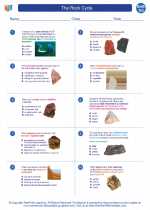Adsorption
Adsorption is the process by which atoms, ions, or molecules from a gas, liquid, or dissolved solid adhere to a surface. This can occur on the surface of a solid, liquid, or gas. Adsorption is a surface-based process where the adsorbate adheres to the surface of the adsorbent. It is different from absorption, which involves the incorporation of a substance into the bulk of the material.
Mechanism of Adsorption
Adsorption occurs through several mechanisms including physical adsorption (physisorption) and chemical adsorption (chemisorption). Physisorption involves weak van der Waals forces and occurs between the adsorbate and the adsorbent surface. Chemisorption, on the other hand, involves the formation of chemical bonds between the adsorbate and the adsorbent surface. The specific mechanism depends on the nature of the adsorbate and the adsorbent.
Factors Affecting Adsorption
- Surface Area: A higher surface area of the adsorbent provides more sites for adsorption.
- Temperature: Generally, adsorption increases with a decrease in temperature.
- Pressure: Higher pressures can increase the extent of adsorption, especially for gases.
- Nature of Adsorbate and Adsorbent: The chemical properties of the adsorbate and adsorbent will influence the adsorption process.
Applications of Adsorption
Adsorption has numerous applications, including in purification processes, catalysis, gas masks, chromatography, and environmental remediation.
Study Guide
To understand adsorption better, it's important to study the different types of adsorption, the mechanisms involved, and the factors affecting the process. Additionally, exploring real-world applications of adsorption can provide further insight into its importance in various industries.
Key points to focus on:
- Distinguish between physisorption and chemisorption.
- Explore the factors that influence adsorption.
- Study examples of adsorption in everyday life and industrial processes.
◂Earth Science Worksheets and Study Guides High School. The Rock Cycle

 Worksheet/Answer key
Worksheet/Answer key
 Worksheet/Answer key
Worksheet/Answer key
 Worksheet/Answer key
Worksheet/Answer key
 Vocabulary/Answer key
Vocabulary/Answer key
 Vocabulary/Answer key
Vocabulary/Answer key
 Vocabulary/Answer key
Vocabulary/Answer key
